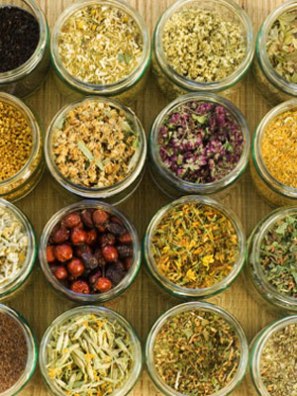Why More People Should Be Using Herbal Antibiotics
Antibiotics are one of the greatest medical advancements humankind has made to date. But with the rise of antibiotics, their success has also created several unforeseen issues, the most pressing being powerful strains of antibiotic-resistant bacteria. Luckily nature has several of its own herbal alternatives that can stand in when the need arises.
When antibiotics were first discovered to be so effective in treating certain types of illnesses back in the 1950’s and 60’s, the expectations were high. Doctors began prescribing them at every turn and some experts felt that we would eventually see the complete elimination of infectious disease at the hands of this new and powerful form of medicine.
It got to the point that in the 1970’s, victory was declared by the Surgeon General of the United States. It was felt that it was time to close the book on infectious diseases that could be treated with antibiotics. Vaccines had smallpox almost completely eliminated, and, smallpox was almost completely eliminated and polio vaccines were having incredible success preventing infections all over the world. It was predicted that diseases such as TB and Malaria would be gone by the year 2000. 1
But their celebration was a bit early.
Overuse Creates Antibiotic Resistant Strains of Bacteria
Despite the optimistic outlook on the decline of infectious diseases, they continued to grow. In the late 1990’s roughly 3 million people a year were being admitted to hospitals with difficult to treat “antibiotic-resistant” bacterial infections, or ‘superbugs’. What’s worse was that many people who were being admitted to hospitals for things such as a heart attack or bronchitis, were beginning to get sick and die from these superbug infections they’d picked up at the hospital.
Penicillin was discovered in 1929 but it wasn’t commercially used much until after World War II. Those were days when everything seemed miraculous and science had the answer for everything. New antibiotics begin to spring up, and in the moment no one bothered to listen to the voices raising concerns about the consequences of overusing these new and powerful medicines. Even Alexander Fleming, the man responsible for developing Penicillin, explained in his writings that several new strains of bacteria resistant to his drug were already beginning to appear. He even went so far as to directly warn in a New York Times interview in 1945 that improper use of penicillin would lead to the rise of bacteria resistant to the antibiotic. By the 1970’s penicillin resistant strains of bacteria began showing up outside of hospitals.
All life is intelligent and adaptable, and bacteria, being the oldest form of life on the planet, are no different. Most of the antibiotics originally developed by humans comes from fungi that bacteria encountered long before humans appeared. Given that fact, it’s easy to understand how bacteria can evolve to resist antibiotic medicines.
Good Bacteria
The bacteria that colonize our bodies are not harmful or malignant. They take up all of the space they can where bacteria can reside on or in us. In doing this, they leave no room for other, harmful, bacteria to live and grow. Our “co-evolutionary” bacteria generate antibiotic substances which fight and destroy harmful bacteria, and actually protect us.2 As one example, the Streptococcus bacteria that live in our throats produce large quantities of antibacterial substances that destroy the pyogenes bacteria which cause strep throat.
Regular exposure to pathogenic bacteria as our bodies grow and evolve, teaches the good bacteria how to respond to threats. This produces immunity and steady, overall good health throughout life. Research continually shows that children who are overly protected from germs and bacteria end up much sicker later on in life. This is the result of a lack of immunity to such threats their underexposed bodies were unable to develop. Being exposed to the bacteria of the world out of which our species evolved, helps humans to develop a stronger immunity.
Herbal Antibiotics
Appropriate alternatives to using pharmaceutical-grade antibiotics for every illness you encounter, might be herbal antibiotics. Stephen Buhner, in his book Herbal Antibiotics: Natural Alternatives for Treating Drug-Resistant Bacteria (Storey Publishing, 2012), lists the types of natural antibiotics  available in three separate categories that help explain why each is effective.
available in three separate categories that help explain why each is effective.
Systemic Antibacterials: These types of medicines systemically work their way through the blood stream and affect every cell and organ within.
Here are some examples of herbs which can help treat systemic infections such as resistant staph, MRSA, tuberculosis and malaria:
- Cryptolepis (Cryptolepis sanguinolenta)
- Sida (Sida acuta)
- Alchornea (Alchornea cordifolia)
- Bidens (Bidens pilosa)
- Artemisia (Artemisia annua)
Localized Antibacterials: These are more limited in their movement because they don’t easily cross membranes. An example would be using something of this nature in the urinary tract or on the skin. Organic cranberry extract has A-type proanthocyanidins, a chemical that helps prevent bacteria from sticking to the urinary tract (heavily sugared cranberry juices or non-organic cranberry extract tend not to have enough of this active chemical to be effective). Here are examples of localized non-systemic herbs which treat resistant infections of the GI tract, urinary tract, and skin. Goldenseal is also a powerful agent against most food poisoning bacteria such as E. coli and salmonella.
- American goldenseal (Hydrastis canadensis)
- Juniper (Juniperus spp.)
- Usnea (Usnea spp.)
- Raw, Organic Honey
Synergistic Herbs: These types of natural anti-bacterials facilitate the action of other plants or pharmaceuticals. Simply put, they make other anti-bacterials more effective. Here are a couple of examples of herbs that boost inactive resistant bacteria, increase the presence of antibacterial agents in the body, and enhance immune function.
- Licorice (Glycyrrhiza glabra and G. uralensis)
- Ginger (Zingiber officinale)
- Black pepper (Piper nigrum and P. longum)
As you can see, there are very powerful herbal anti-bacterials that can take the place of antibiotics in several situations. That’s not to say you have to completely reject antibiotics altogether – there are going to be times when that might be the best treatment for what ails you – however, they can be the solution of choice more often then we might believe. This is especially beneficial, when considering the overuse of antibiotics in today’s world, and the negative consequences it has elicited.
Be well!
Source Material
1 – Stephen Buhner, in his book Herbal Antibiotics: Natural Alternatives for Treating Drug-Resistant Bacteria (Storey Publishing, 2012),
2 – Care 2 – 30 Foods with Natural Anti-Biotic Properties – http://www.care2.com/greenliving/common-foods-herbs-with-antibiotic-properties.html

Recent Comments